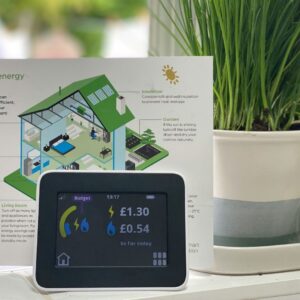When considering the potential of Open Banking payments, it is important to turn our focus, as an ecosystem, to the opportunity at hand.
This ecosystem comprises banks, payment service providers (PSPs), gateways and acquirers – all of which play an important role in the wider adoption of account-to-account (A2A) payments.
How does the ecosystem support market demand, and how can it support merchants to succeed with a ‘right-first-time’ mentality?
Opportunity knocks
Believe it or not, Open Banking payments will give banks the opportunity to become the centre of the payments world once more. I reason that, as A2A payments shift to become mainstream, we will see not just the decline in debit cards, but also other – now more traditional – alternative payment methods, cutting out many of the middlemen, and making payments simpler again.
For the banks, this is an opportunity to reassert their position as the lynchpin of the payments universe, acting as an acquirer for this new type of payment and providing value-added services that will become disaggregated from cards. On top of that, by using API aggregators like Token, banks can compete in the new financial layer and build other products and services around A2A payments.
There were concerns that Open Banking could have disintermediated PSPs, gateways and acquirers. But, instead, they are now moving en masse to offer Open Banking capabilities in response to merchant demand for this lower-cost payment mechanism, while still adding their own value-added services.
Gateways see Open Banking as an opportunity because they have been squeezed between merchants, schemes and acquirers for so long, which has gradually eroded their margins. The cost-effectiveness of A2A payments compared to cards and other alternatives will help to drive a greater margin for gateways, especially as they build value-added services on top, like reconciliation and reporting. Meanwhile, acquirers seek to add A2A payments to complement their card-acquiring capability.
The time is now for PSPs
The latest data from openbanking.org.uk shows that 4 million UK consumers and businesses use Open Banking-enabled products. As of July this year, the UK topped 2 million successful Open Banking payment initiations per month – an impressive 664% increase in one year.
The data demonstrate that Open Banking payments are at a tipping point. There is now genuine interest in adopting A2A payments among merchants because they are familiar with the cost savings, security and speed of settlement that these deliver.
 Given increasing merchant demand, alongside the fact that PSPs going through an RFI process with merchants are now asked to confirm support for Open Banking as mandatory, the question is no longer if PSPs should buy into Open Banking payments, but when.
Given increasing merchant demand, alongside the fact that PSPs going through an RFI process with merchants are now asked to confirm support for Open Banking as mandatory, the question is no longer if PSPs should buy into Open Banking payments, but when.
PSPs should not delay given that Open Banking payments are gaining traction and are likely to be ubiquitous within the next six to 18 months.
I would suggest that if a PSP has not already considered how Open Banking payments will position and differentiate them in the market, then their merchants will be ready to consume them elsewhere. This means now is the time to be having a conversation about Open Banking payments with a partner like Token.
Converting the clicks
If you are a PSP that supports A2A payments, and your merchants are starting to ask about accepting low-cost bank transfer payments directly within their app or website, then that is the first step.
But you might be wondering, how can you help merchants nudge their customers to click – and, ultimately, convert – to A2A?
It makes sense that many consumers will want to “click to try” to understand what A2A payments are and how they work. To maximise conversion, we must welcome that kind of consumer interest. However, we have seen that the highest conversion rates can be achieved if merchants aim to educate consumers about A2A payments and how they operate before they try them.
In other words, through thoughtful user experience design and communications, merchants can prime consumers to “click to buy” rather than “click to try” — even on the first go. Once consumers enter the journey, completion rates are above 99%.
‘The two Ps’
As with any user experience, that ‘right-first-time’ mentality is key.
My suggestion is that PSPs encourage merchants that are about to launch A2A payment propositions to consider the two Ps: placement and prompts. These are what I believe to be the two main ingredients for success, so let me explain.
Placement might seem obvious, but I believe it bears repeating, given the impact it can have. It is important that ‘pay by bank’ is not presented last on a long list of payment method options. Put simply, we know from experience that merchants who place ‘pay by bank’ as a first or second option see the highest click-through and completion rates.
When it comes to prompts, PSPs should guide their merchants to provide a clear explanation of A2A payments. While it’s absolutely true that A2A payments are both sleek and intuitive, I have seen some great examples of merchants going above and beyond to provide an extra layer of information — and therefore confidence — to consumers. For instance, I’ve seen some merchants using an interstitial or pop-up to explain what A2A payments are and what to expect when they click.
By nailing both placement and prompts, consumer adoption will go through the roof.
An ecosystem for everyone
Let’s not forget, the ecosystem is a powerful tool. For example, if I pay off my credit card with an instant bank payment today, when I see the option to ‘pay by bank’ on an e-commerce website tomorrow, I’ll be much more likely to choose it again.
At Token, our data supports the fact that consumer adoption is growing in the UK and across Europe and that consumers are returning to Open Banking payments. From PSPs to gateways, acquirers and merchants, that’s better for everyone.
Written by Michael Lane, VP of sales at Token









